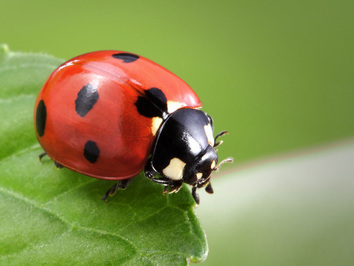Good vs Bad Garden Pests
 There are many kinds of plant pests. Insects, mites, birds, and animals sometimes eat plants before farmers or gardeners can even harvest them. Plant diseases can cause crops to suddenly die, or cause the crop rot before it can reach the market.
There are many kinds of plant pests. Insects, mites, birds, and animals sometimes eat plants before farmers or gardeners can even harvest them. Plant diseases can cause crops to suddenly die, or cause the crop rot before it can reach the market.
However, not all pests are harmful to plants. Some are also helpful to your garden and the environment. If you are a garden owner, it is equally important to know which pest is good and which one is bad for your property. This way, you know which ones to eradicate and which ones to allow to wander around your lawn.
Bees, for example, are a familiar sight; they buzz about seeking the rich stores of nectar and pollen held within the flower blossoms. While they may be noisy and “stingy” to be around, many plants would not grow without their help. They are very useful in plant reproduction. As they fly about  searching for food, they fertilise plants by spreading pollen from one plant to another. This allows the plants to reproduce.
searching for food, they fertilise plants by spreading pollen from one plant to another. This allows the plants to reproduce.
Another familiar insect you should allow in your garden are the beetles. The ladybugs or the ladybird (also called lady beetle) are great protectors of your green and colourful property. Why? It’s mainly because they feed on common garden and household pests such as mites and aphids. With their presence, you can be sure that no mites or aphids survive because ladybugs eat them, including their eggs.
Other beneficial species of beetles you should invite into your garden are the ground beetles and soldier beetles. These beetles guard your garden from slugs, snails, aphids, caterpillars, and many other insects.

Ants are another kind of garden pest. Are they good or bad for your garden?
For starters, ants serve several valuable functions. They help maintain the balance of nature by consuming a large number of insects and serving as a food source for other animals. They enrich the soil as they dig their burrows, loosening and mixing the dirt. The fungus-grower ants that nest in large chambers deep in the soil are great helpers for composting. They grow fungus on beds of compost made from the
droppings of plant-eating insects such as caterpillars. While they drink some of the plant juice from these materials, they use most of it to raise the fungus that they and their larvae dine on.
Ants also benefit people when they feed on insect pests. In fact, ants were used as the first method of biological pest control more than 2,000 years  ago in southern China. The silk nests of green tree ants were moved from nearby forests to orange groves. And since these ants are aggressive predators, they eat any and every insect that crosses their path, thereby helping keep the groves free of pests.
ago in southern China. The silk nests of green tree ants were moved from nearby forests to orange groves. And since these ants are aggressive predators, they eat any and every insect that crosses their path, thereby helping keep the groves free of pests.
Garden pests have both good and bad sides. Some of the very habits that make them helpful also make them harmful. They can be household pests, infesting food and sometimes delivering painful stings. Some can damage homes and other buildings by burrowing into wood. Learn to control them to keep them from getting inside your home and allowing them only around your garden.
For more garden and landscaping tips, tune in for more Jim’s Mowing NZ blogs.


